The Transformative Power of Arts Education | A Conversation with Dr. Lucy Chen
Key Points
-
Arts education boosts academic performance, communication skills, and student engagement, supported by long-term data.
-
Tailoring arts programs to individual student needs creates impactful pathways, from foundational exposure to professional aspirations.
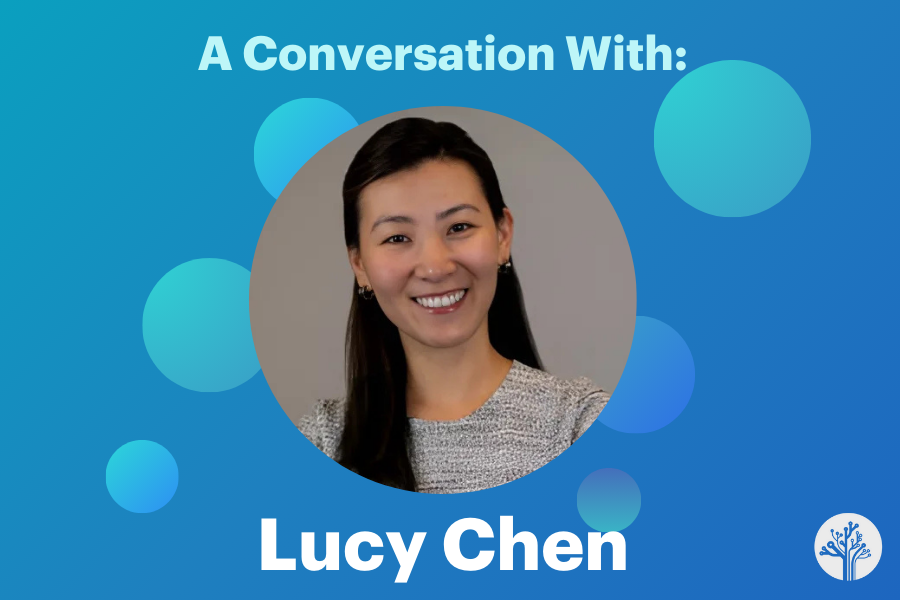
For anyone who has watched a video version of our podcast, it’s clear that I love the arts. My background is guitars, piano, and painting. My first dream career was as a singer-songwriter. My first job was helping teach an art camp. My entrance into education was trying to build an arts integration program to reframe standards, and my first board position was with the Kansas City Young Audiences, a teaching artist organization. So it’s been a part of every decision I’ve made my whole life.
This is something that I realized early—that the arts become a lens with which to navigate and contribute to the world—and yet, year after year, organizations have to fight to keep them funded, prioritized, and respected.
For those reasons, I’m chatting with Dr. Lucy Chen, VP of Advocacy and Community Engagement at the Cathedral Arts Project, a Florida-based nonprofit providing arts education and therapeutic programs to students across traditional, charter, and homeschool settings.
Mason Pashia: Lucy, i’s great to meet you. I’m curious—when did the arts, for you, feel like something that you chose to do rather than something that you just had to do, like someone made you do it?
Lucy Chen: That’s a great start, and I’m going to tell you a little bit about my background. So I’m trained as a pianist. I started to play the piano when I was two years and 10 months old. Normally, when I say this, everyone in the audience goes, “Oh, wow.” This couldn’t be further from a prodigy story.
The reality was me playing “Twinkle, Twinkle, Little Star,” and I forgot the ending. All I could remember was my dad wildly gesturing for me to get off the stage to save me from embarrassment. That was the start of my journey. It wasn’t until much later in life that I had a chance to study with some very incredible professors who gave me the confidence, joy, and pleasure in practicing. I remember one of my favorite professors, Anthony Deana Ventura, who is a world-renowned pianist. When he asked me, “Lucy, how many hours do you practice?”—as a musician, your answer has to be up there.
But I was also busy teaching as a side job. I said, “Professor, I only got three or four hours that day because I was teaching kids.” Then his eyes lit up, and he said, “Lucy, that is the most important job in this world.” So that’s part of my life, and I will always remember him sharing that comment with me.
Mason Pashia: Wow. Yeah, that is very powerful. To the younger you on the stage, I’ve always thought that “Twinkle, Twinkle, Little Star” resolved a little too neatly at the end. So I think it’s very nice that you improvisationally took it in new, more space-like directions. We’re not really sure what’s out there.
Lucy Chen: Yeah, that’s a great point. The only thing I remember was my dad telling me, “Get off the stage.”
Mason Pashia: I saw in your bio—one more quick icebreaker question—you like to hike? I love hiking. I’m up in Seattle. What do hiking and music have in common?
Lucy Chen: You are the first person to ask me that question, and it is perhaps one of the best questions. I think they’re very similar because there’s a lot of research that talks about concentration, flow, focus, and setting little milestones. When we hike, I wish I could hike 20 miles in one day.
That can’t be the reality because you actually have to train for it, right? You have to build up stamina. You have to start from mile one to three miles, five miles. It’s the same with the arts and music. You have to set little milestones to achieve your next one. So I think there are a lot of commonalities between the two, and the feeling—the gratification at the end when you actually get to the summit—that feeling is perfection.
Mason Pashia: I feel it’s both when I am playing music, listening to music, and hiking. And I think it has to do with flow, but it’s this dynamic sense of time. A moment feels ever-widening, or it can feel like it’s gone in a blink. That ability to exist in both of those spaces is a huge gift to experience as a person.
Lucy Chen: Yes. And one of the perfect performances is when you have absolute control. And sometimes, as a classical musician, the stage sounds different—your technique. But when everything feels perfect, that is incredible. It truly is incredible.
Mason Pashia: Yeah, on a hike, I will say that it rarely feels perfect. I’m usually tired, and my feet hurt. But it is also a lovely time. Thanks for sharing.
So I want to start with maybe the question that I ended with in my intro because I think it’s interesting, and I just don’t know the answer. Why are arts programs so under-prioritized in typical ed reform policy and funding conversations? You’ve been in this space for a while—what have you seen and learned?
Lucy Chen: According to Arts Education Partnerships, it’s known that, of all the states, only 32 consider arts as a core subject. Again, the saying is, “What gets tested is the one that really gets measured and prioritized.” So that is one factor—whether the arts are considered a core subject or not.
And because there’s also class sizes, right? Imagine going into a classroom as a teacher, and you have 60 kids in a room playing different instruments. It’s really hard to structure a class around that for about 45 minutes. It’s asking the teacher to accomplish the impossible.
Understanding all of that, another item is really seeing the impact of the arts. I don’t think everybody understands that it’s beyond just a letter grade. Oftentimes, the impact with kids and that “aha” moment—that’s what transforms later in life.
Mason Pashia: Yeah, that “aha” moment is so important. I love that. I think that really gets into something that we are spending a lot of time with in the ed reform space, which is this competency-based learning or this shift away from the letter grade and the standards and time-bound measurements to being able to demonstrate something or being able to express or articulate that you are able to do something.
Such a kind of a catch-22 of the arts is like you have this moment where a student feels really good about themselves, and then you just can’t ever really articulate that again. It’s like this emergent one-time thing. And I think something your work does that is really interesting, both through the organizations that you’re supporting and helping start, is really focusing on the student outcomes and engagement metrics. Talk about why that’s such an important entry point into spreading the good word of music and arts in education.
Lucy Chen: We always get stories from students, right? The feeling of joy. But what is the true impact and measurement across the board? At CAP, we administer student surveys and look at student assessment grades as well.
Here is the data we tracked for the past 10 years: 97% of the students enrolled in CAP programs were promoted to the next grade level. Beyond the letter grade, we see how students communicate with peers and parents, and 84% of the parents say, “We see our students communicate better, and you can see them enjoying what they do at home.” So if they are able to take what they learn in the classroom and replicate that at home, that is a true win.
We know statistics, right? In America, 90% of Americans want arts education in their schools, but only 66% of students actually consistently participate in that. So there’s already a gap. For some schools, like charter schools and high schools, only 33% of charter school high schoolers get to have it. It’s really important to see the long-term impact of arts education and what it can do for students.
Mason Pashia: Yeah, I mean, this is an interesting time to be having this conversation. The federal picture for arts support is changing rapidly. I guess just to help our listeners understand the scope of what we’re talking about—when you’re saying arts education, is this like a set of classes that people typically understand? Is this sort of like the STEAM or integrated arts into the classroom? When you say arts education, give me a little bit of a definition in your brain.
Lucy Chen: Of course, we think about the traditional arts education—the music class, the theater class, the dance class. But there is also arts integration that you mentioned, which is pairing an academic subject with an arts subject. And for those who may not be very familiar with this concept, we think, “Wait, what is this about?”
Let me give you a simple example. For second graders, we want to teach math. Math can be very fun, but most of the time, when you’re doing addition and subtraction, the fun disappears within maybe 10 minutes of the class. But we did a program that is engineering, math, and understanding the physics of sound.
And you ask, “How does that happen?” Students were designing Boomwhacker orchestras—clear light tubes. And then we teach students about measurement, the length, the distance. We also brought in a scientist to teach the physics of sound. We did a Chladni plate where, with different frequencies, it has different shapes. So students in second grade got a chance to visualize what this is about. And it works because after the 10-week program, we saw that students’ testing grades improved by at least 15 points compared to students who did not have arts integration.
Mason Pashia: Interesting.
Lucy Chen: So what is so fun about it? It’s that it engages students. It allows students to learn with multiple entry points, and it’s highly effective. We are seeing this in our charter schools. We use this pairing with language arts, with civics and theater. And we are seeing a 20-point increase compared to schools that do not have this program.
So it’s a very effective way of delivering arts education. So when you ask me about what I consider arts, you have your traditional after-school arts programs. You have your choirs, but you also have your arts integration.
Mason Pashia: Very cool. I think that project is such a rich demonstration of the real-world applicability of arts as well. I think that there’s a “show, not tell” approach to arts that always grounds it in the real world. And I think it’s so interesting that in this moment where, again, we have this funding picture that is really supportive of work-based learning and is really supportive of internships and getting students experiences in the community, arts is not an immediate contender for a catalyst for that work. So I really appreciate that demonstration, and especially with younger kids, like immediately connecting math—the famous math question is just like, “Why are we learning this? When am I ever going to use calculating slope?” Let’s look at waveforms and talk about the sound waves of music. That’s a great way to ground it in something real and then have lasting learning and implications as a result.
Lucy Chen: We also used the same strategy for our middle schoolers. And I remember what the teacher told me. She said we paired graphic design and visual arts with computer science, and after one school year, the teacher came back and said, “I’m teaching my students to not just be consumers of video games. They’re actually now learning to do something with technology, and it opens doors to allow them to see a world that’s a little broader than what they see every day.”
Mason Pashia: Amazing. And it’s something we get rid of the older students get, like all the time, is this—we’ve basically, everyone’s mad that we’ve created a culture of consumers and not producers in terms of just everybody’s extracting and not really contributing. That’s sort of our lens on it. And when you’re in fourth grade, oftentimes you’re told to write a story along with doing a book report. And then by the time you get into eighth, ninth grade, creative writing is kind of out the window. You’re just reading texts and analyzing them, which is a useful skill, but if you get rid of this other side, then there’s not this continuous nudge to contribute back into your classroom, to your community. And that’s such a critical part of what it means to become a person—figuring out how you can contribute to your environment. It doesn’t even have to be art. It’s just that art is a way to actually make you go the next step and actually make something or contribute something.
Lucy Chen: And a lot of our programs are focused on elementary school grades because they are the foundational years. If a student cannot read by third grade, that presents a huge issue later on in life. We go into schools where we have, instead of just writing essays, we ask students to turn this into a script. Immediately, the class bursts with joy because it’s a different type of writing. They can have different career paths afterward. Learning these little tidbits for our younger students is opening doors for a different career path that, again, they would probably have not imagined otherwise.
Mason Pashia: Amazing. Give me an idea of the scope of what CAP does. Are you pretty much across the whole state? Are you in a couple of pockets here and there? What is your saturation in the state?
Lucy Chen: We are mainly in Northeast Florida and based in Duval County, but we serve our neighboring counties. And for those of you who may not be very familiar with Jacksonville, Florida, it’s the largest city by landmass. So we do have a pretty wide span in terms of programs. We have daytime programs similar to the arts integration model we spoke about. We have after-school programming and arts as a therapeutic service for young adults.
We are in traditional public schools, charter schools, and homeschools. We meet students where they are and do everything we can to ensure that every student has access to high-quality arts education.
Mason Pashia: I know you’re biased because you are with CAP, but is this something that is super unique to Northeast Florida, or is this kind of organization all across the country, all across Florida? Are there these intermediary arts orgs that are doing arts integration work, or would you say that we need a lot more of them? I guess give me a health assessment of the landscape of these orgs.
Lucy Chen: We do a lot. This past year alone, we have served over 4,000 students. We are one of the larger arts organizations here, reaching the numbers of students that we reach. We are a partner with the Kennedy Center as one of the Any Given Child sites. We are the 14th in the nation in doing that.
And honestly, our work has been recognized nationally through the National Endowment for the Arts, Americans for the Arts, and even different school districts have called and asked, “What is your secret sauce? Share a little more about what you all do.” We are very proud of the efforts and our national recognition for the outcomes we are able to achieve.
Mason Pashia: Given that Kennedy Center agreement and you being the 14th, there are other organizations across the country that are trying to do similar kinds of work, but y’all are great. Okay, cool. I’m curious about—again, this is me projecting—but the arts have famously complicated and bizarre pathways to careers and whatever comes after school. Both because of the power of the arts and the ways our education systems are currently structured, they’re usually one of the highest-impact learning experiences that a young person has. It is the place where they’re like, “I love doing this, and I got to explore, and this is so fun.”
So as a result of that, they have this powerful experience, and they’re like, “I want to be an artist when I grow up. I just want to paint. I want to be a musician. I want to do whatever.” However, those pathways are increasingly challenging. Every young person you meet says they want to be an influencer right now, and you’re like, “Cool. Not sure that’s an abundant job, but go for it.” How do you personally or as an organization respond to that kind of interest from a young person and make that an abundance problem rather than a scarcity problem?
To where concert pianists—that’s a tough road and a really impressive place to land, but you are not guaranteed to land there. And you’re also doing this amazing thing for an arts org at the same time. So that wasn’t what you would’ve guessed when you were on the stage playing “Twinkle, Twinkle, Little Star.” So I don’t know, just help me make sense of guidance, advice—where you stand on that?
Lucy Chen: No, it’s a very practical question. Going back to the Boomwhacker class—think about a second grader. You mentioned students wanting to be an influencer. When we walked into the classroom, we asked, “What do you want to be in the future?” Literally, 60% of the kids said, “I want to be an influencer.” And they were only in second grade—imagine that. But when we were able to introduce different career pathways, we brought in a scientist. By the end of the class, the 60% of students who wanted to be an influencer decided 50% wanted to be a scientist when they grow up. So it really is about exposure.
That is one way we expose students to different career paths. At CAP, we have students who started with us in third grade and performed at Carnegie Hall. That is a tremendous result from our students. But do we expect every student to perform at Carnegie Hall? No, I don’t think that is the ultimate outcome. It’s the life lessons they learn throughout that are most important.
In terms of career paths, we do have students who want to major in music. We also have students who have been with us since third grade, went to an arts magnet school, but are now interning at an engineering firm and also at banks because they wanted to explore finance. For those who would like to be a musician, I think someone gave me very good career advice when I was in college. They said, “Lucy, be a jack of all trades.”
What we all have in common is that we have to be entrepreneurs in some aspects. We have to learn. I remember building my own website. I remember learning how to give a public speech. I remember learning how to do sound checks. And these are things that sometimes might not be taught in school. You know this.
Mason Pashia: Absolutely.
Lucy Chen: With all the classes we learn—music theory, on top of all the fundamentals that we learn in music—I think there is an element of life and entrepreneurship and running a business that every young musician or aspiring artist should have. Just be a jack of all trades and say yes to everything.
Mason Pashia: I could not agree more. I think that’s been a soapbox of mine in our organizations for a long time. If you are teaching pathways in general, all of them need to be imbued with entrepreneurship because that is the job of the future.
We’re still dealing with the gig economy and what that means. You have to say yes to many things that you’re not expecting, and then suddenly you get a little luck or are in the right place at the right time because you’ve said yes all the right times and kept trying.
Yeah, my mom’s a painter and has written professionally, and her career path has always been fascinating to me. We’re actually seeing an organization called Advance CTE, which does career cluster frameworks for schools and O*NET and a bunch of other places. Their most recent version of the career sectors has entrepreneurship as something that you have to teach in every single one of them. And one of them, of course, is arts and entertainment. I’m hoping that conversation starts to happen, and that especially collegiate-level classes for arts start to make that a mandated requirement. It’s not just understanding the finances of the publishing industry, which I had to learn. And I was like, “Are you kidding me? This is something that I don’t need to know. No one’s going to make sheet music of my music.” But we need to be doing entrepreneurial work instead of some of these other more antiquated modes of business learning.
Lucy Chen: John Perry was a very famous pianist. He recently passed away in his 90s, but I remember having a class from him, and he said, “You know what I did, Lucy, when I was in high school? I played every genre possible.”
Mason Pashia: Totally.
Lucy Chen: And that is the key—just learn everything that comes your way.
Mason Pashia: It’s important. Being a performer in music, in a professional capacity, is very similar to being an athlete. It is very rote practice. It is anatomical. I was listening to something the other day about why there are so many more injuries in professional sports. There’s just all these injuries all the time, and one of the leading theories is because people specialize at the age of six and they stop cross-training. Whereas before, you would maybe have a basketball player who plays baseball in one season, football in another, and soccer. It gets to a place where you’re just doing basketball all the time. And then what that does over time is it just really grinds down these muscles.
I think what you just said is a similar example. If you have to play different styles of music, both to keep an open mind but also to build muscle and mechanisms differently, your fundamentals are so much better if you also have played jazz as well as classical. There’s just a bunch of really interesting pieces to keeping an open mind in all of these pathways, starting young. So I think we’re both biased to music—sorry for all the music analogies throughout—but this applies across the arts for sure.
Lucy Chen: And there, John Perry was a very famous pianist. He recently passed away in his 90s, but I remember having a class from him, and he said, “You know what I did, Lucy, when I was in high school? I played every genre possible.”
Mason Pashia: Totally.
Lucy Chen: And that is the key—just learn everything that comes your way.
Mason Pashia: It’s important. Being a performer in music, in a professional capacity, is very similar to being an athlete. It is very rote practice. It is anatomical. I was listening to something the other day about why there are so many more injuries in professional sports. There’s just all these injuries all the time, and one of the leading theories is because people specialize at the age of six and they stop cross-training. Whereas before, you would maybe have a basketball player who plays baseball in one season, football in another, and soccer. It gets to a place where you’re just doing basketball all the time. And then what that does over time is it just really grinds down these muscles.
I think what you just said is a similar example. If you have to play different styles of music, both to keep an open mind but also to build muscle and mechanisms differently, your fundamentals are so much better if you also have played jazz as well as classical. There’s just a bunch of really interesting pieces to keeping an open mind in all of these pathways, starting young. So I think we’re both biased to music—sorry for all the music analogies throughout—but this applies across the arts for sure.
You’ve got two initiatives that I want to hear about and we’ve talked about. I think we’ve cited some of the data from one of them already, which is the Data Science for Social Good program, which you helped lead with North Florida University.
Lucy Chen: Yeah, so we work very closely with the University of North Florida’s Data Science for Social Good program. It’s a 12-week entrepreneurship program for data scientists. There are two professors who are lead professors of the program, and they recruit students all over the nation.
They are then selected into this summer internship, and together with the professors and interns, we look at solving a wicked problem. And a wicked problem in my case is: How do we analyze all of this data? We started a lead research project, which stands for Landscape of Education and the Arts in Duval. It’s a survey that we administer to principals every year, and we collect questions such as—actually answers that are like—how many minutes of instruction do you offer to your students? What types of funding are available outside of your regular budget? How much money do you have to allocate? There were some funding questions, what programs they would like to see, and what does their community makeup look like?
After getting all that data, we merged it with Department of State data to look at student academic outcomes. We found that schools, especially those in the urban core, by just having arts field trips or after-school arts programs, it boosts students’ academic learning in language arts, math, and science. It’s like ding! Everything that we’ve been saying this entire time, it’s put together in a chart, in a plot chart, and it allows us to advocate for more resources for students. That was the beginning of something that allowed our projects to blossom and bring thousands of kids onto multiple field trips and just learn more about our city.
Mason Pashia: Amazing. And then you have another one called the Arts and School Certification System. We think a lot about credentialing and badging and all these things. So I’m just curious to know a little bit more about what that is and what that’s done for your community.
Lucy Chen: It also came out as part of the lead survey. We were able to advocate for arts-integrated field trips, and students were able to visit multiple cultural institutions in town. Part of what came out of that survey is that we designed a rubric to provide a roadmap for principals to see, “Okay, if you only have this amount of resources, how do I get to the next level? How do I partner more with communities, and what can I do to engage our families, our parents, our school administrators? How do we have the arts as one of the core subjects in our schools?”
And what can we do as a school to make that happen? So using that, we designed a rubric, and there are four levels for the school to achieve. Ultimately, last year we launched the Principal of the Arts Award to highlight the principal who truly is—it’s oftentimes principals are the unsung heroes.
And so we want to, as a community, highlight the principals who have given a lot of support financially through different mechanisms, through booster clubs or community partnerships, and to link arms with those willing to support and highlight the arts in their schools. That was another program we launched through the lead work with UNF.
Mason Pashia: Okay. Thank you. I want to leave us today with two final questions. One of these is really—like you’re doing this advocacy work, you’ve been doing it for a while, you’re collecting really valuable success stories, data, and engagement metrics. If everything breaks our way—us being our passionate art people—what will this actually look like down the road?
Do you envision—is art still a set of courses? Is it fully integrated? Is every class just more artful? I would love to know what your vision of the future is with respect to how arts should be in our education systems.
Lucy Chen: I think every student, every family, and every school is unique and different, and every student learns differently. So having arts programming that fits the needs of every individual child—that would be the ultimate goal for the future. Whether there would be a pathway for students who may want to perform at Carnegie Hall, there are programs that would support students to do that. For some students, they may just want to dip their toes and try theater for the first time, and that’s okay.
I think the ultimate joy about all of this is the sense of excitement in learning and how arts can boost academic goals. And I think that is the ultimate key. Every year, we allow students to perform on a stage with about 2,000 seats. One day, a student excitedly got out of school and was talking to his dad. His dad was on his phone, and the student said, “I’m going to perform at this theater.” The dad was not paying any attention until the word “theater” came up. The son goes, “Yes, I’m going to perform at a theater with 2,000 people inside.” The dad looked at the son, head to toe, back to that little face again, and then said, “Dang.”
And I think that is the moment of joy.
Mason Pashia: Yeah.
Lucy Chen: That can’t be replicated, no matter the subject. That is a sense of pride. Imagine what that dad is going to say tomorrow at work or to his family. That’s the reason why we do what we do—to have that creative spark and ignite that for every child.
Mason Pashia: I want to hear one that’s a little bit more systems-level, big picture. What’s giving you hope right now in this space? At a larger picture, the movement of arts education—there are all kinds of challenges, and they’re emerging every day. But is there something in particular that you’re seeing that you’re like, “This. This is giving me hope in this space”?
Lucy Chen: I think, similar to the school choice movement, that there is a program for every child, I see that in the future there will be an arts program for every child that meets the needs of every family. So that is—I see hope in that.
Mason Pashia: I love it. All right, so today we learned about a lot of different things about the arts, but I think my couple of takeaways—one of them is just that the stories and the data exist. I think too often people say, “Oh yeah, your kid had a good time with the arts, but there’s no evidence.” Organizations across the country are collecting this evidence. It exists. Go find it if you need it. So that’s one of them.
Two is this really radical personalization of the arts. It is a tool both for personalizing and it can meet people where they’re at on their own arts pathway. So I think that’s another key learning from this. And then the last one, just to return to something at the very top, but this idea of the flow state. We are still nascent in research on what that is, what can create that. But music, hiking, all kinds of things are really good ways to get into that state. Our educators across the country need to be figuring out ways to facilitate flow state more for students to help them learn and grow in powerful ways.
Those are just a couple of things that I wanted to double-click on, but Lucy, thank you so much for being here today. It was great to hear and learn from you.
Lucy Chen: Thank you for your time, Mason.
Lucy Chen
Lucy is the Vice President of Advocacy & Community Engagement at the Cathedral Arts Project (CAP), where she drives efforts to make quality, accessible arts education a reality for every child across Northeast Florida and beyond. She advances CAP’s mission by fostering relationships with parents, policymakers and school leaders to expand the organization’s reach, leading advocacy grounded in evidence-based student outcomes and impact. Lucy also helps lead local and national collaboratives and initiatives to strengthen stakeholder networks, secure long-term access, and broaden community impact.
Links
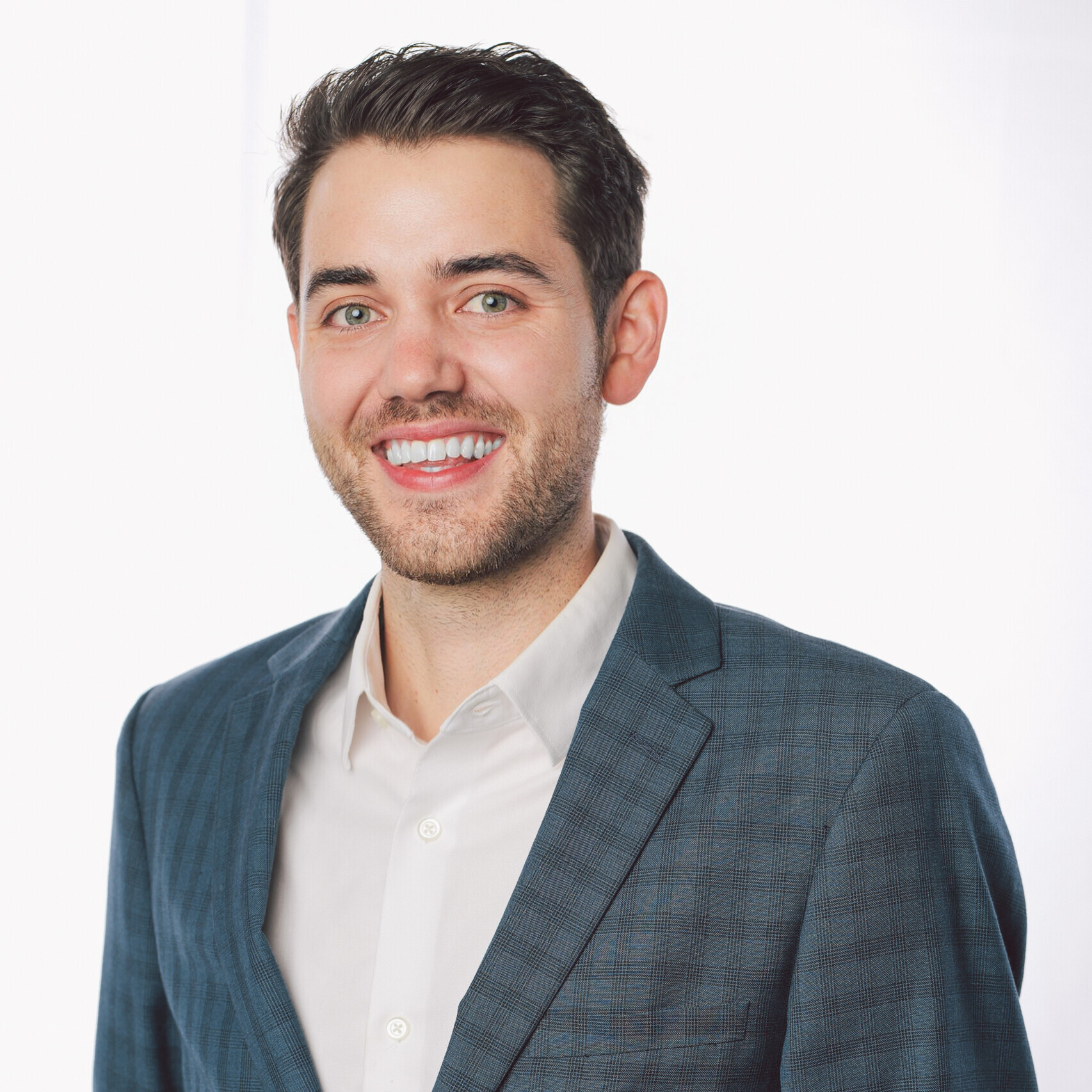


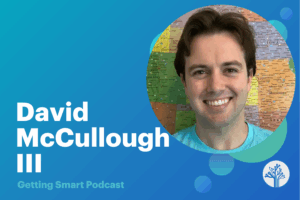
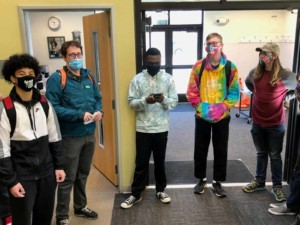

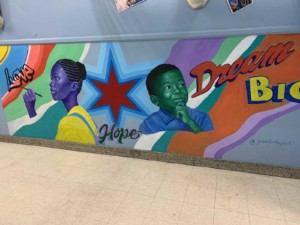
0 Comments
Leave a Comment
Your email address will not be published. All fields are required.